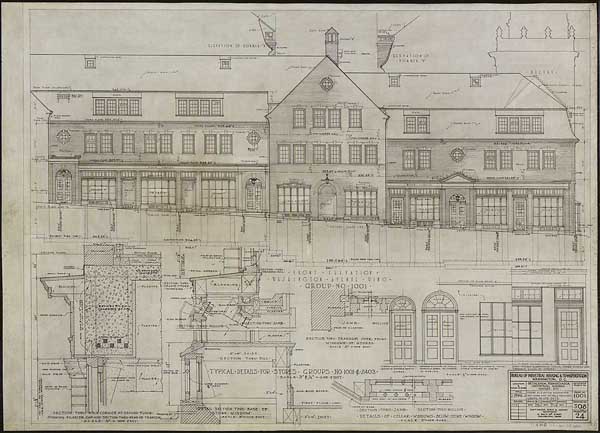
"Front Elevation, Washington Avenue Wing and
Details for Stores"
Thomas Sears, city planner
Drawn by W.H.L. for the U. S. Housing Corporation, September 9, 1918
Ink on tracing linen
29" x 41"
National Archives and Records Administration, Records of the U.S. Housing
Corporation
World War I Boomtowns
When industrial expansion created "boomtowns"
in World War I munitions and shipbuilding centers, severe housing shortages
threatened to curtail production of vital supplies and provoke labor unrest.
In response, the Federal Government established the U.S. Housing Corporation
to construct houses, apartments, and dormitories for war workers. It planned
one of its most comprehensive projects for Bethlehem, Pennsylvania, a
steelmaking center. In addition to homes for workers, the "Pembrook Village"
scheme, by city planner Thomas Sears, included a "civic group" of buildings
with shops, a theater, a firehouse, and a village belfry grouped around
a common. His buildings were embellished with slate roofs, ornamental
chimneys, cupolas, and circular windows. When World War I ended in November
1918, funding cutbacks prevented the Housing Corporation from completing
all but a small part of the ambitious plan.